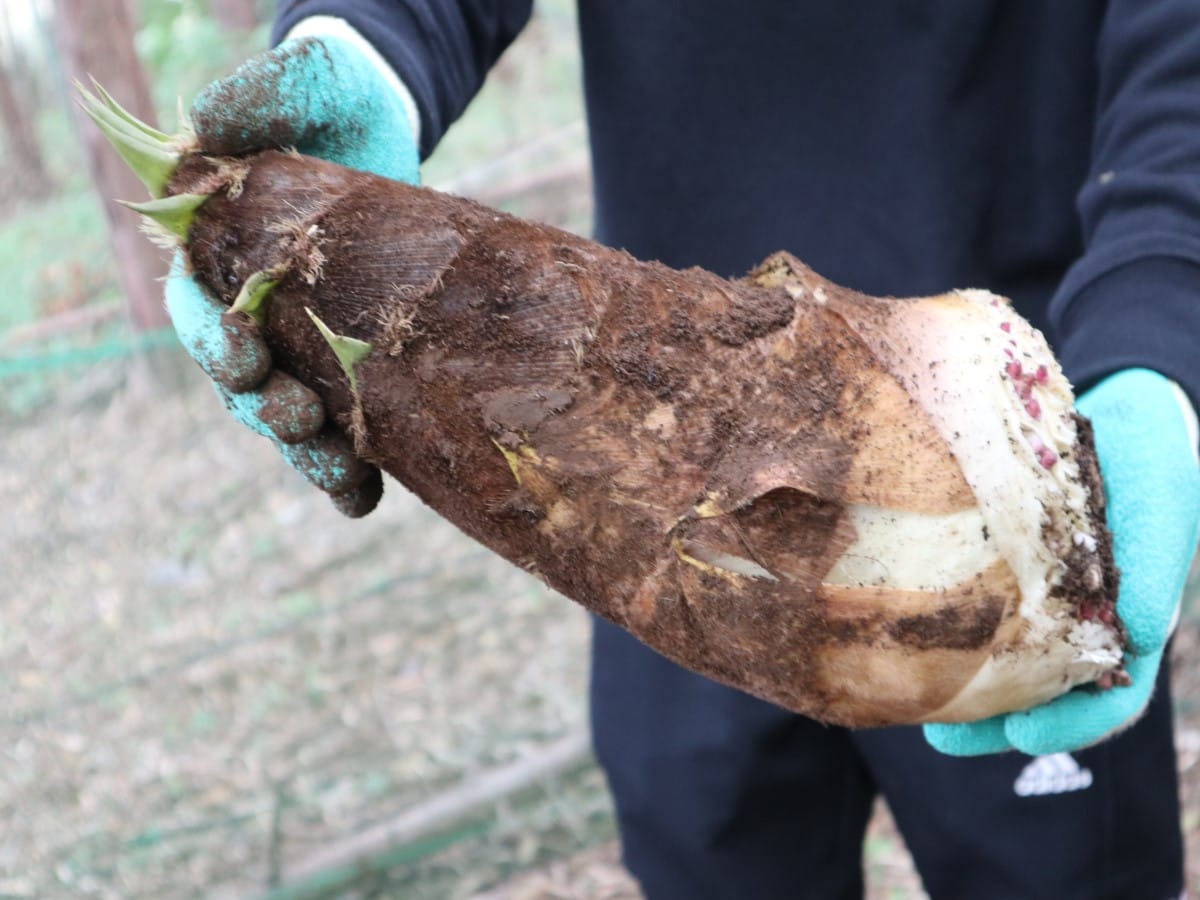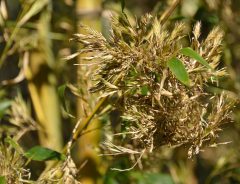
Photo by © cinnamonellie
Digging up Takenoko (Bamboo Shoots) in the Japanese Countryside: Tips and Recipes
- Tags:
- Bamboo / bamboo shoots / digging bamboo shoots / Takenoko
Related Article
-

“Once-In-A-Hundred Year” Sightings of Bamboo Blossoms Reported In Japan
-

Start your own personal fire with miniature bamboo clusters
-

Good Good Mart sells eco-friendly bento boxes & tumblers made of bamboo dust & coffee grounds
-

Japanese Bamboo Art Captivates Western Collectors and the World
-

Traditional Meets Tech With Natural Japanese Bamboo Smartphone Speakers
-

20,000 Bamboo Lanterns Light Up This Charming Japanese Castle Town Once A Year


A couple of weeks ago, my husband suddenly asked me if I want to go takenoko hori (たけのこ掘り) or digging up bamboo shoots in English.
I must admit I was left speechless for a few seconds until I got to wrap my head around this spontaneous yet unusual idea.
However, you don’t get the opportunity to dig up bamboo shoots every day so, after taking some time to process the information, I agreed.
My enthusiasm increased as I was looking forward to this unique experience scheduled to happen during that week.
I also found out that this mini-adventure will take place in Sanmu City, Chiba Prefecture.
The person who invited us over was one of my husband’s coworkers.
I found out that he owns a house in the Japanese countryside, and luckily enough, he also has a bamboo forest nearby.
As many of you know already, Japan has a whole food culture, and seasonal ingredients play a big part. Fresh bamboo shoots are not that easy to come by, and most probably, many people have no idea how to cook it even after getting one.
But no worries! In this article, I will also introduce a few of the recipes we tried out afterward. Hopefully, it will make it easier for you next time you want to try some takenoko dishes.
Takenoko digging and what to be careful with
We left early in the morning, and when we arrived in Sanmu, my husband’s coworker’s son came to pick us up and took us to the house.
We had to bring some clothes for the digging because otherwise, our everyday outfits would have gotten dirty.
I recommend picking an outfit that makes it easier to move in and preferably has dark colors because you will get muddy all over.
I got some black pants and a hoodie (with long sleeves) and sneakers. What I didn’t think of is taking a pair of long socks, too.
If you have long boots, shorter socks probably work too, but in the bamboo forest, you can also get attacked by ticks, so that’s one thing to be careful of when picking your clothes for the day.
After we changed, Mr.S., my husband’s coworker, took us to the bamboo forest nearby. He gave us some gloves, a shovel, then did a demonstration while explaining how to dig it up.
Photo by © cinnamonellie
Then, it was our turn to take up the challenge.
The bamboo shoots are edible if harvested early, so you could only notice some tiny leaves and a bit of the baby trees coming out of the ground.
After activating your eagle eyes to search for the pointy heads shyly making their way out of the ground, all you need to do is pick your favorite and start digging.
Even if the soil is softer, digging can be quite challenging because of the many thin bamboo roots inside the ground.
Mr. S. told us the leaves also show the direction of the roots, so it is probably easier to start digging while looking at their angle and where it points at.
Also, it is necessary to use the strength of your legs rather than your arms when digging.
While we just managed to gather a few bamboo shoots, Mr.S. and his son dug probably ten times more than we did in just a couple of minutes.
We also had to cover up the holes after digging so they won’t fill up with water.
The takenoko we gathered also had many bugs on it(that were attracted to the wetness), so we had to remove the dirt and a few leaves of the exterior before taking it home.
After digging enough, we decided to return because, according to Mr. S., digging was the easy part and the harder one starts when we get back home and start preparing them.
Peeling and preparing the Bamboo Shoots
After getting back to the house, we went to the garden and cleaned off the bamboo shoots.
Photo by © cinnamonellie
We then had to cut each of them in half. By doing so, it is easier to remove the leaves afterward.
Photo by © cinnamonellie
After peeling the takenoko’s outer shell, you get something like this:
Photo by © cinnamonellie
Then, we boiled most of them in a big pot placed in the backyard and left around 2-3 smaller bamboo shoots without peeling all the leaves to grill.
Photo by © cinnamonellie
How to cook
Usually, you have to boil the takenoko before eating it, and one popular way to eat it is:
Takenoko Gohan (Bamboo shoots rice)
Photo by © cinnamonellie
Mr.S. also makes bowls from bamboo, so we had bamboo shoots rice in bamboo.
You can also add the takenoko with the rice and cook both simultaneously, but what I do and most people do is cook the rice first, then add the boiled takenoko after mixing it with some soy sauce, mirin, and cooking sake.
If you want more flavor to the rice, you can also mix in some broth (hon dashi or konbu dashi, for example) when cooking it.
Takenoko sashimi
All you need is fresh (boiled) bamboo shoots slices, soy sauce, and wasabi for dipping it in.
Butter Soy Sauce Takenoko
You will need olive oil, boiled bamboo shoots, mirin, soy sauce, and butter.
To make it, put the olive oil and bamboo shoots in a frypan and sauté it until it changes color. Add the butter, soy sauce, and mirin, mix it well until the butter melts, and Voila! You have a delicious side dish for dinner.
There are many other recipes you can try out, and if you can, you should also make some menma メンマ (seasoned bamboo shoots) for your ramen (or to use as topping for rice).
We also tried making some, but just ate it with Rayu( ラー油 Japanese chili oil) and shichi-mi tōgarashi (七味唐辛子 chili pepper with seven flavors).
If you want to go takenoko hori, it is better to look for a place that allows you to beforehand because many properties are private, so you can’t dig there unless you have permission or a friend that owns the property (how it was in our case).
Access: